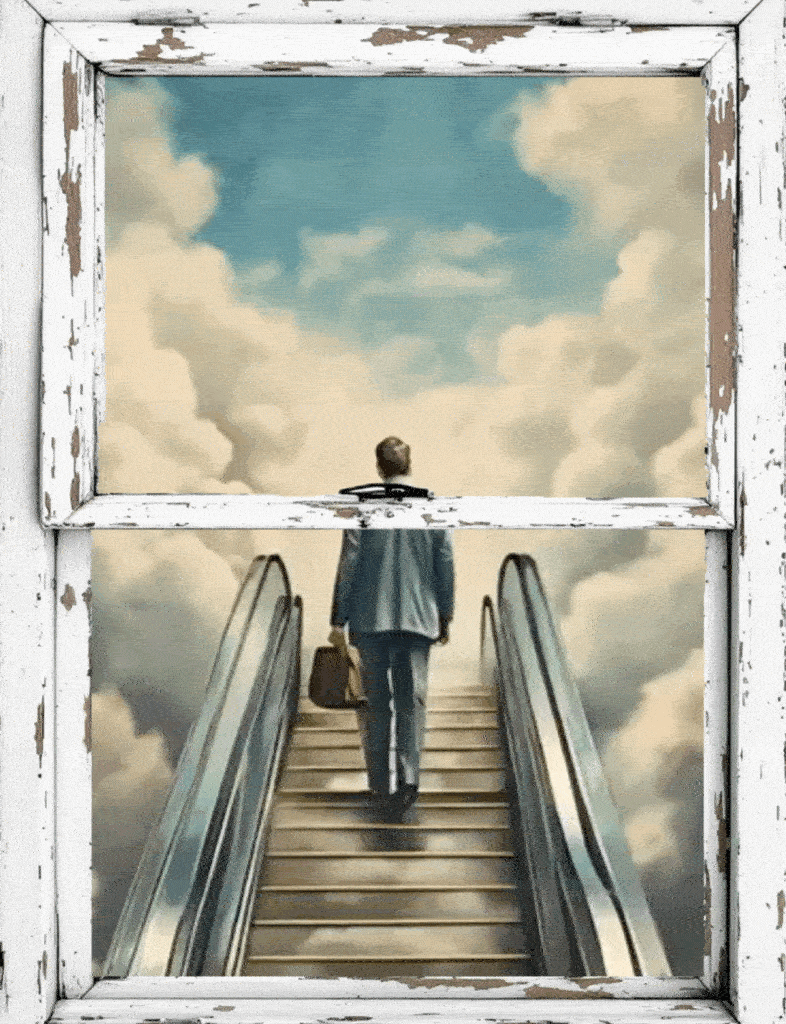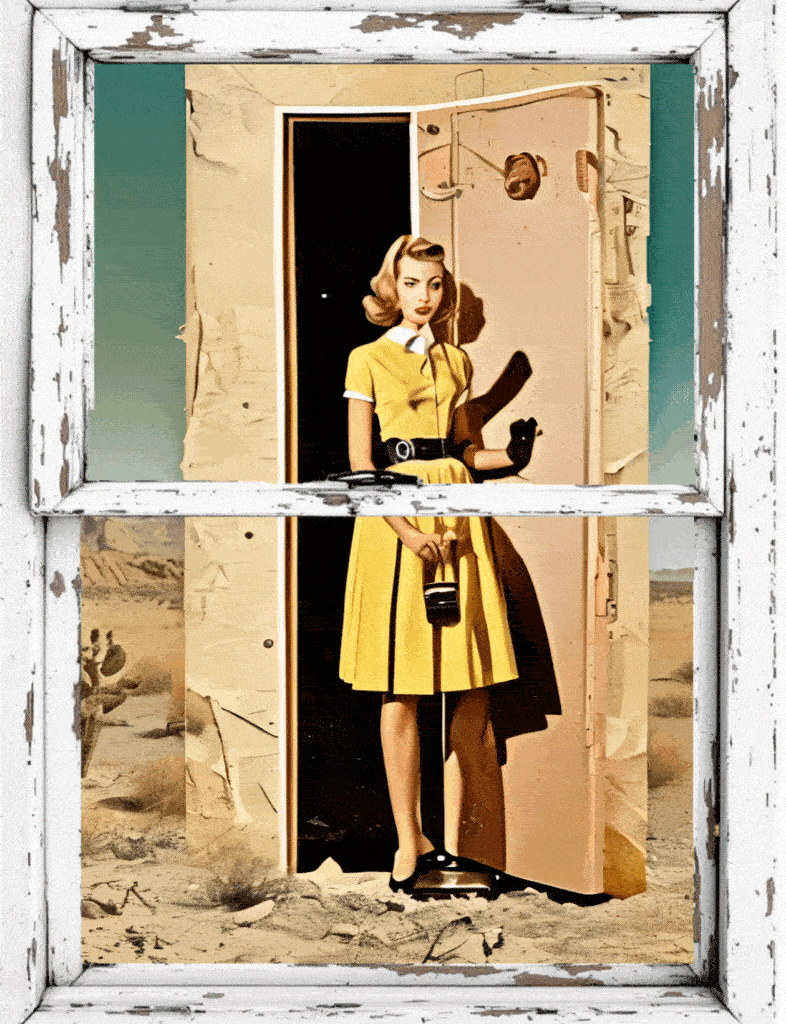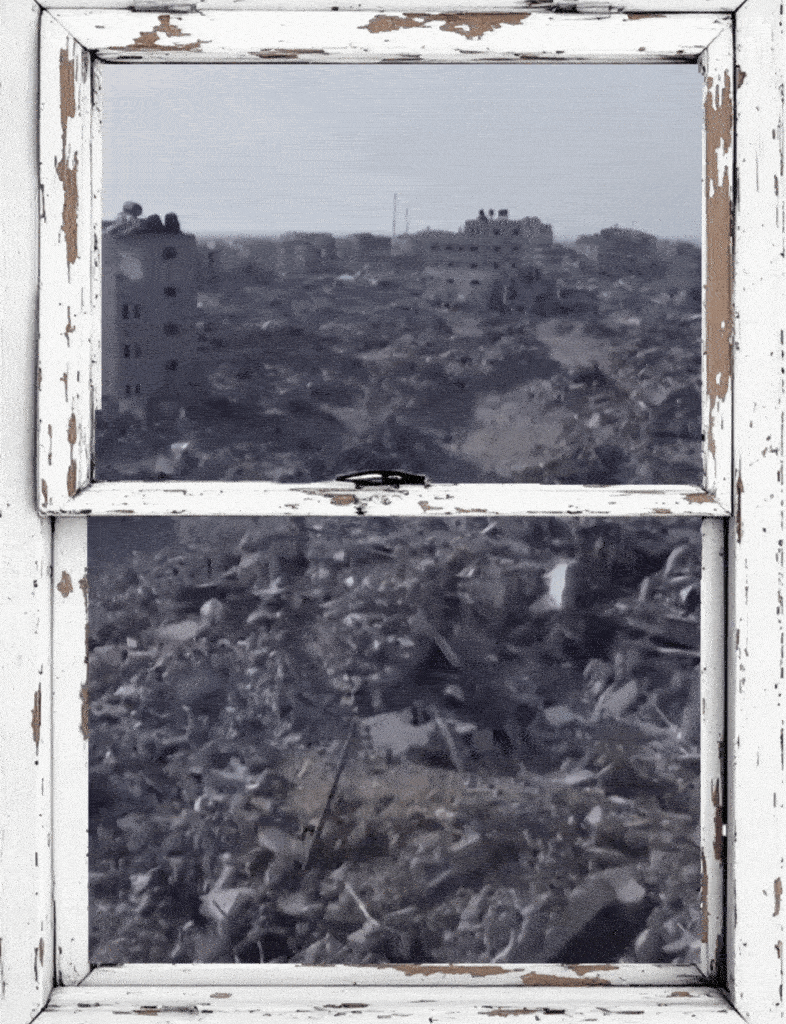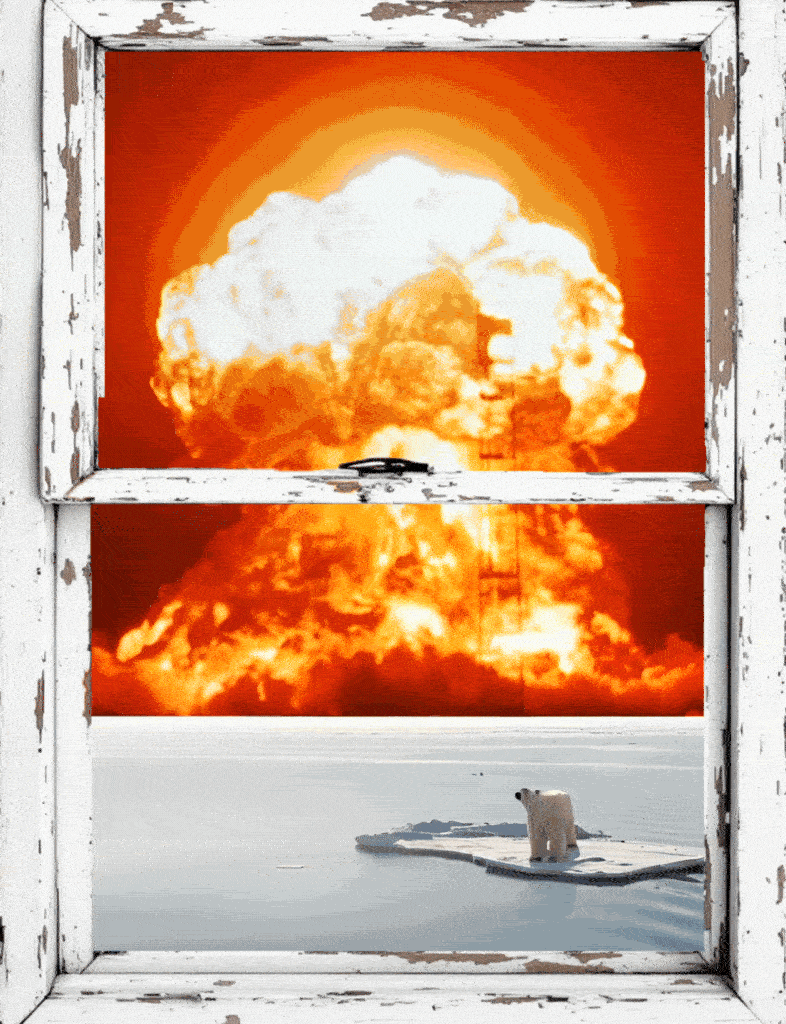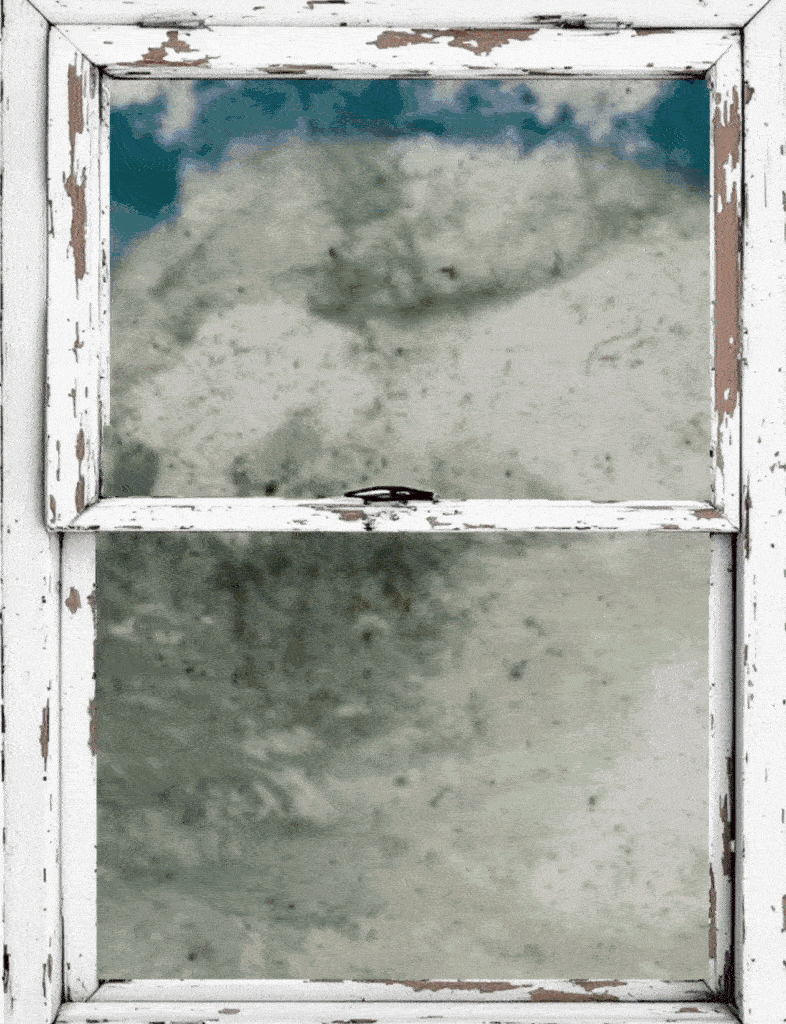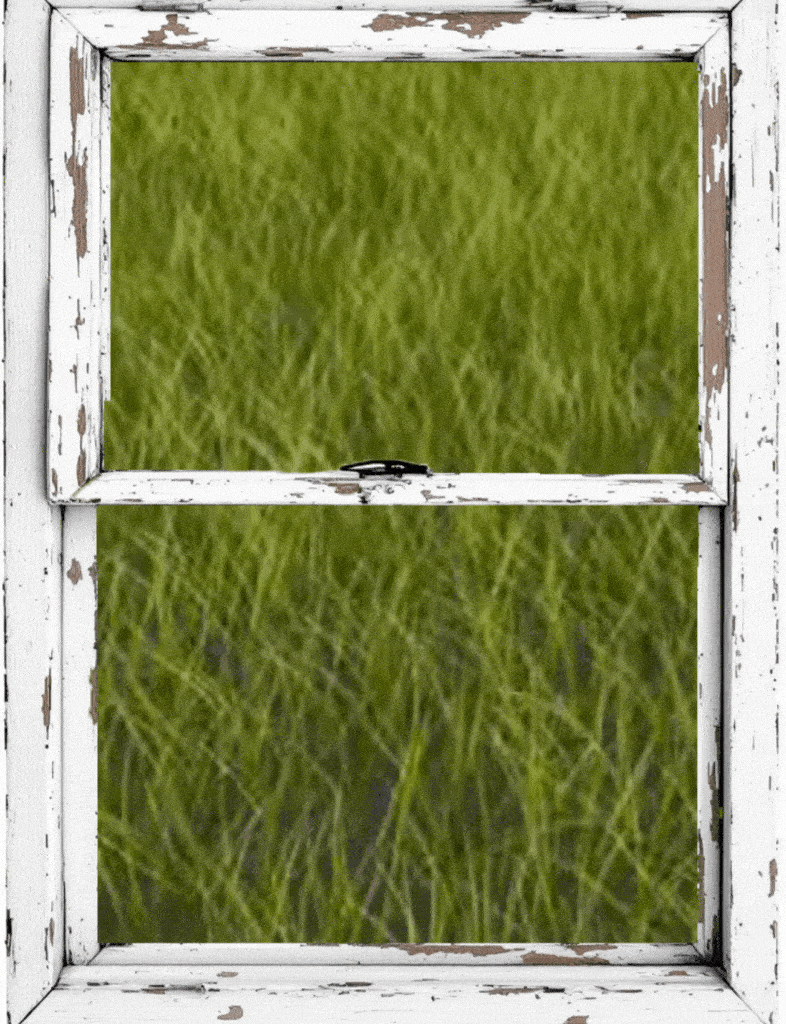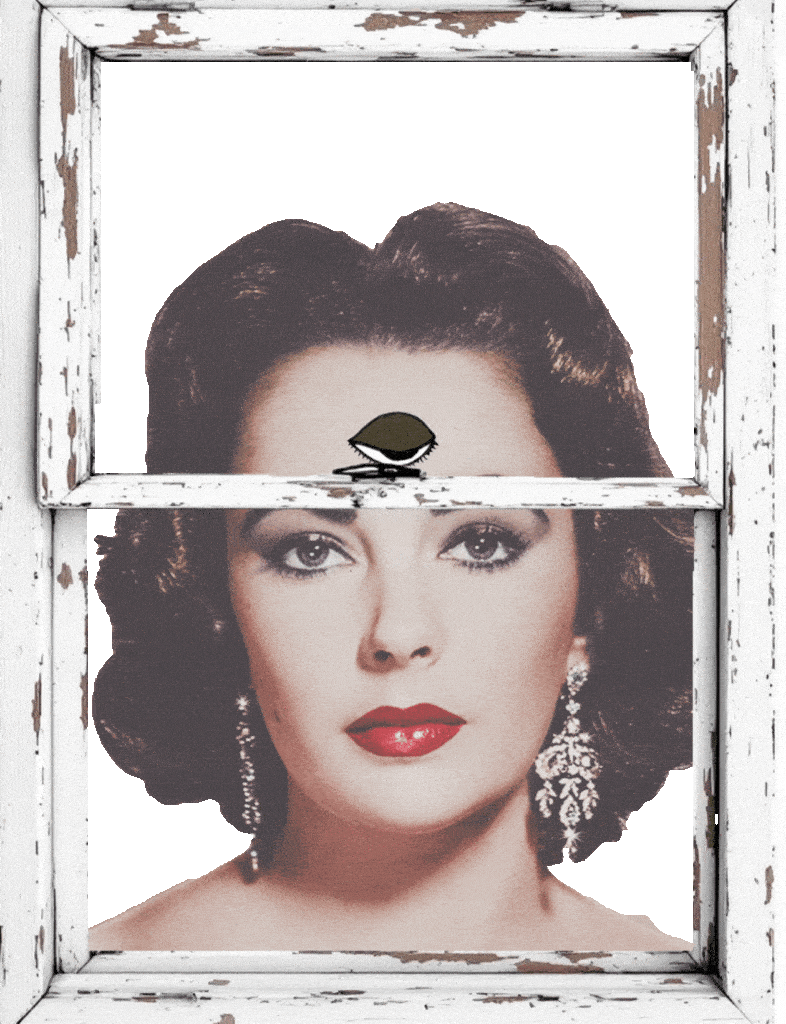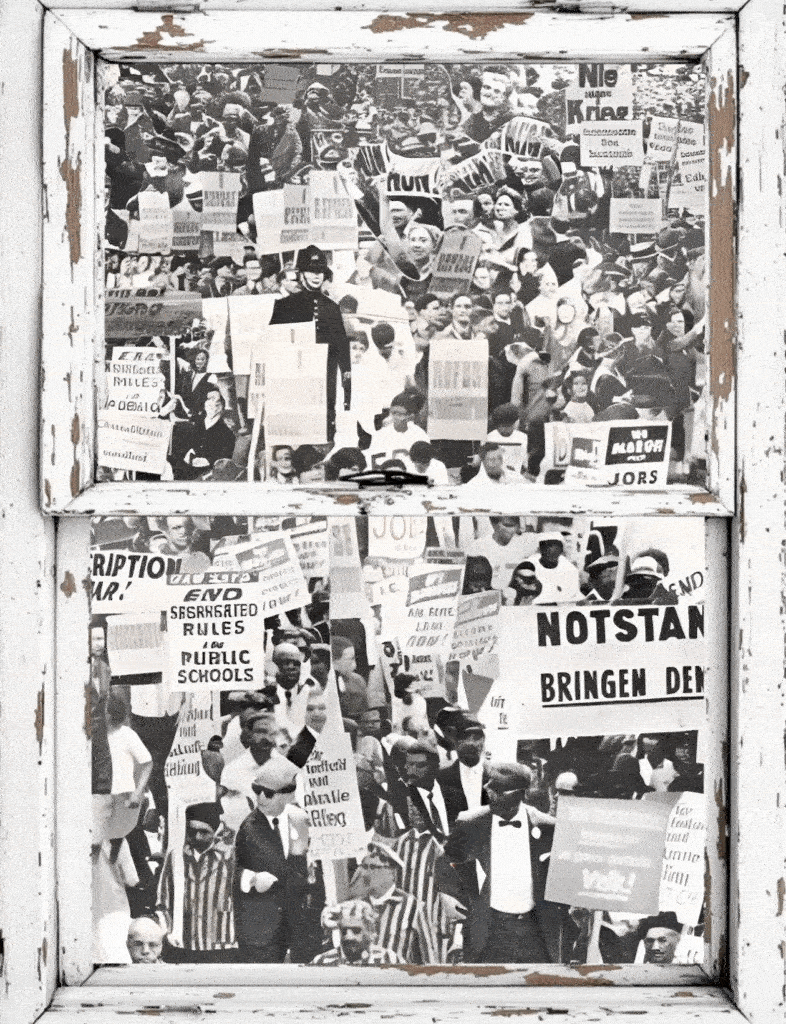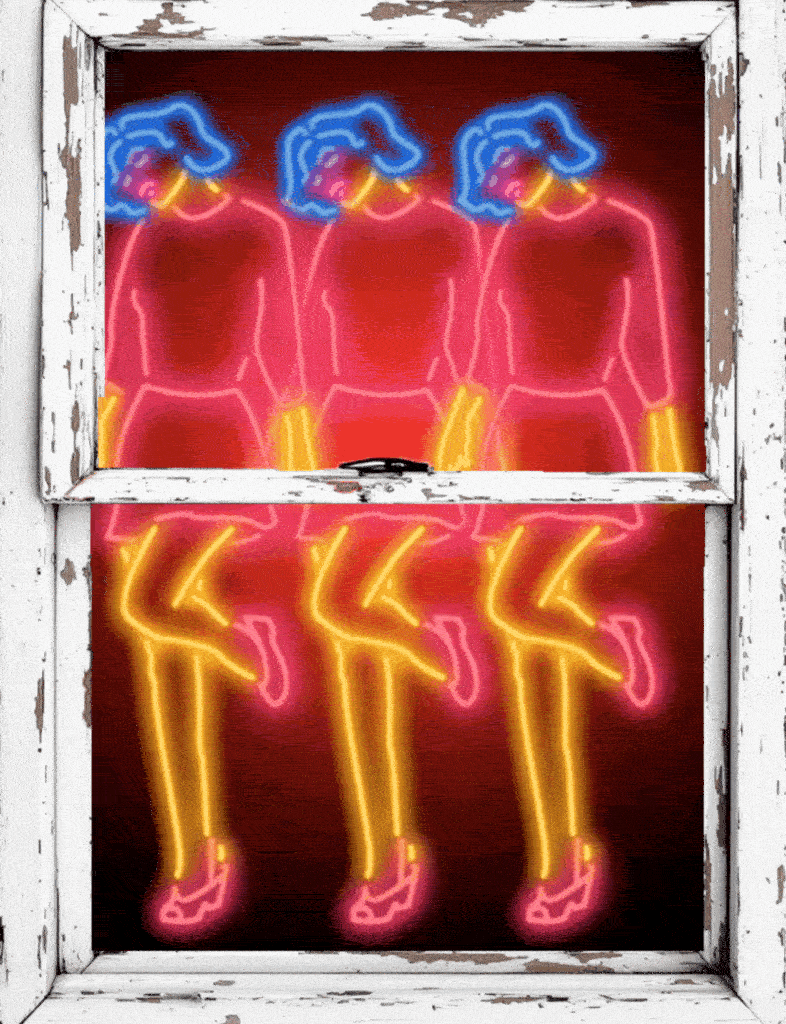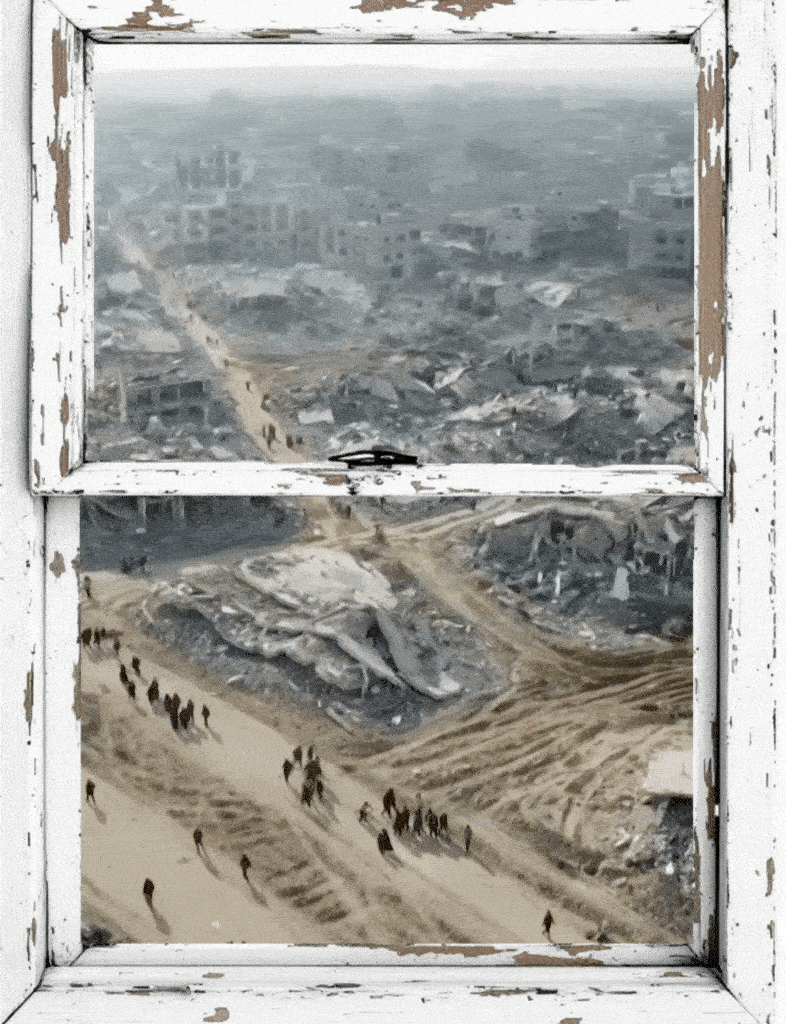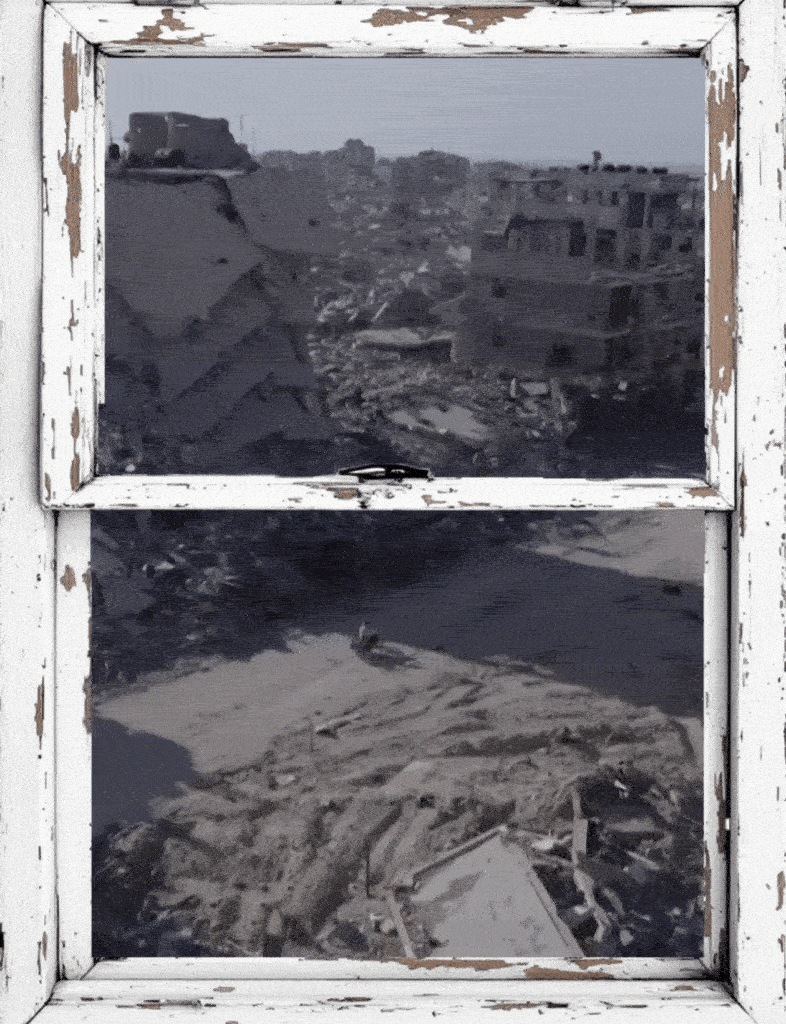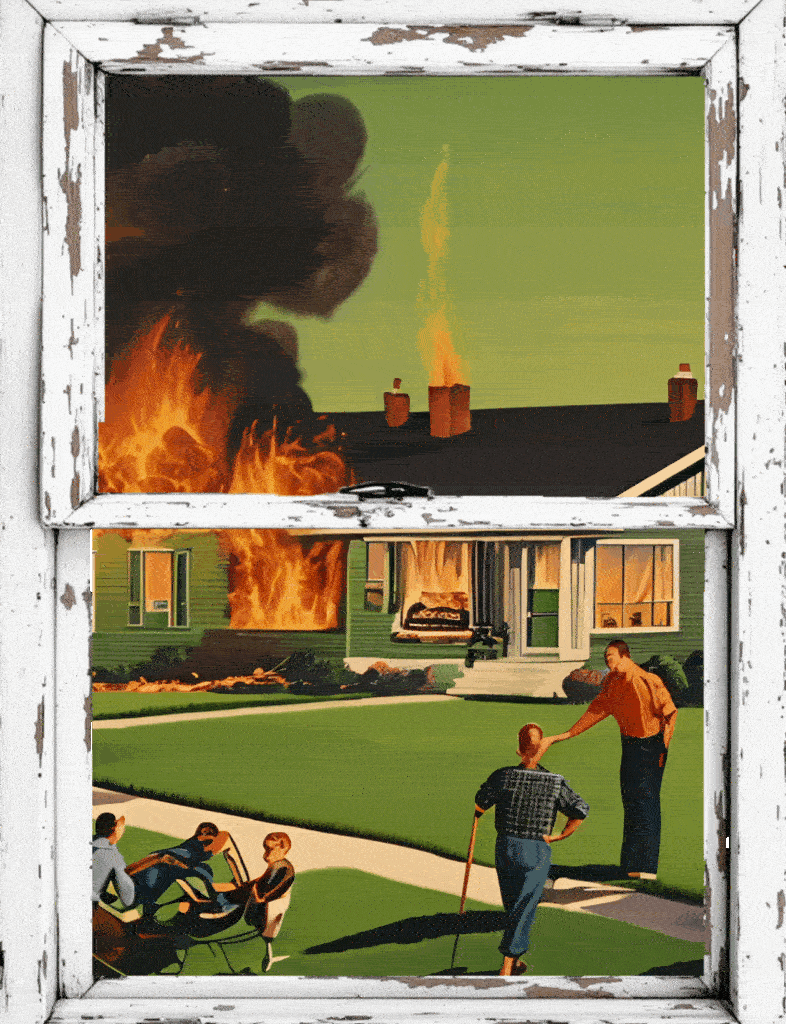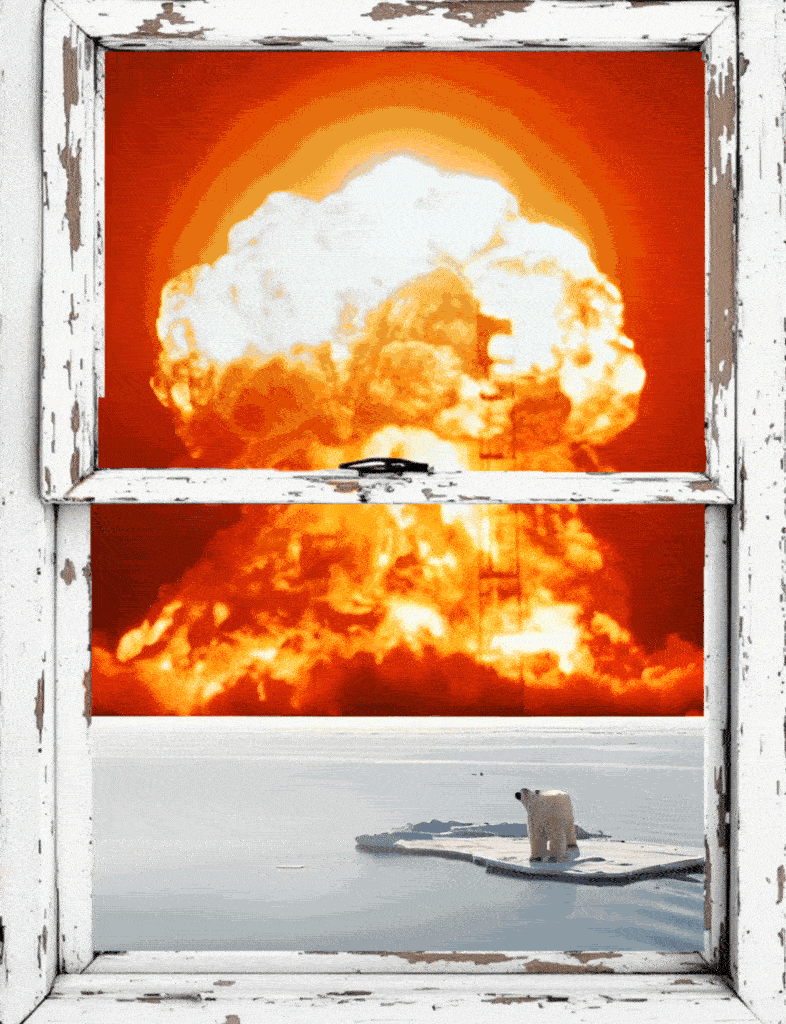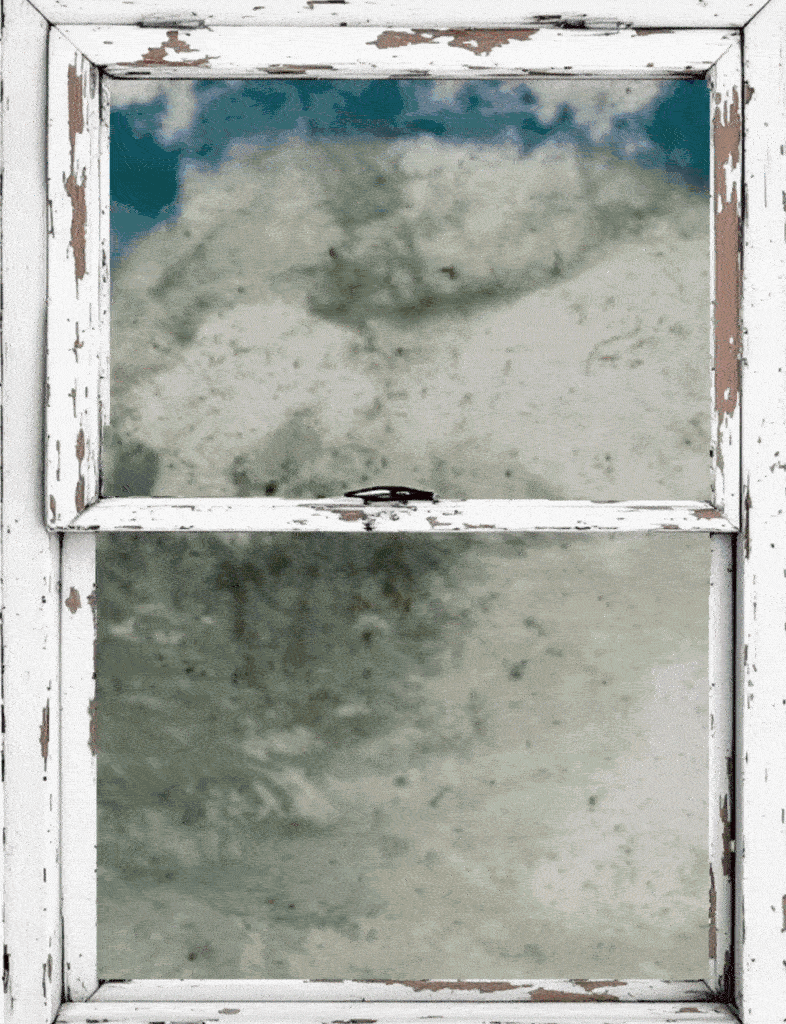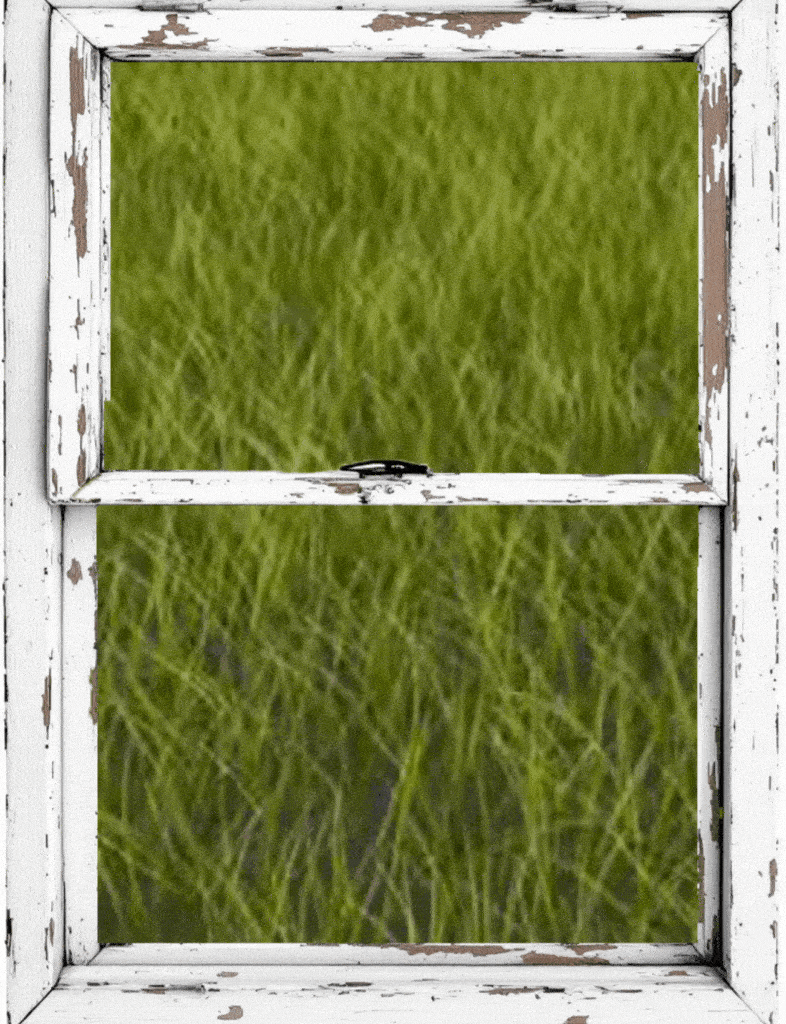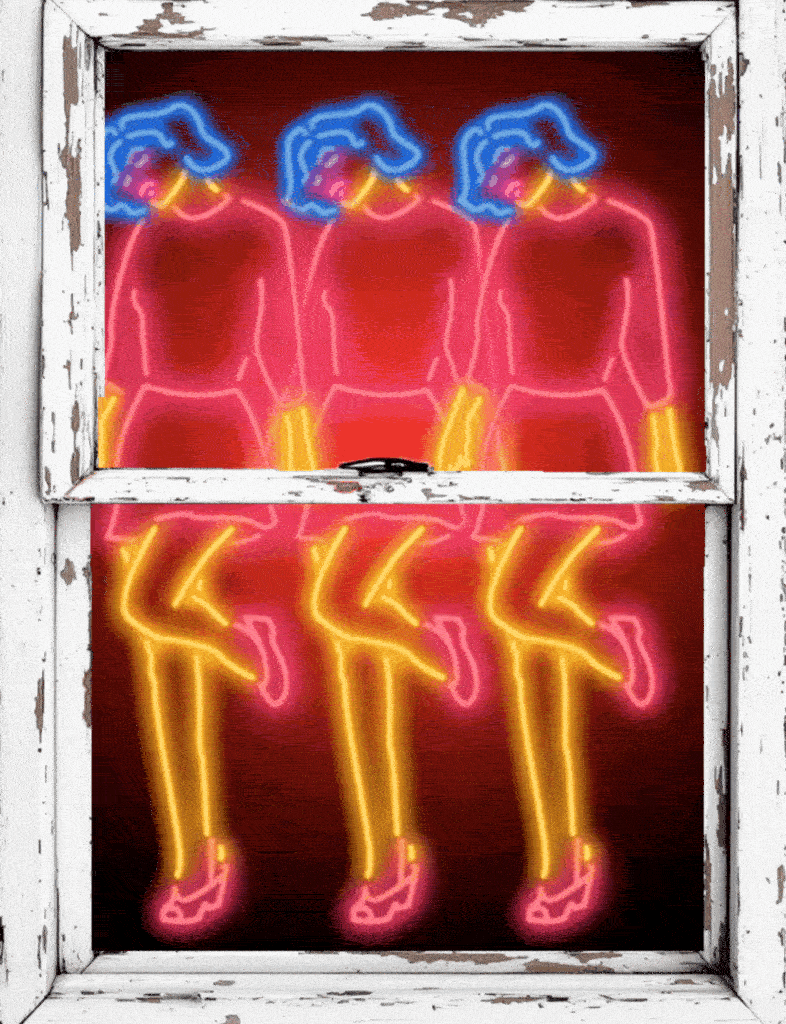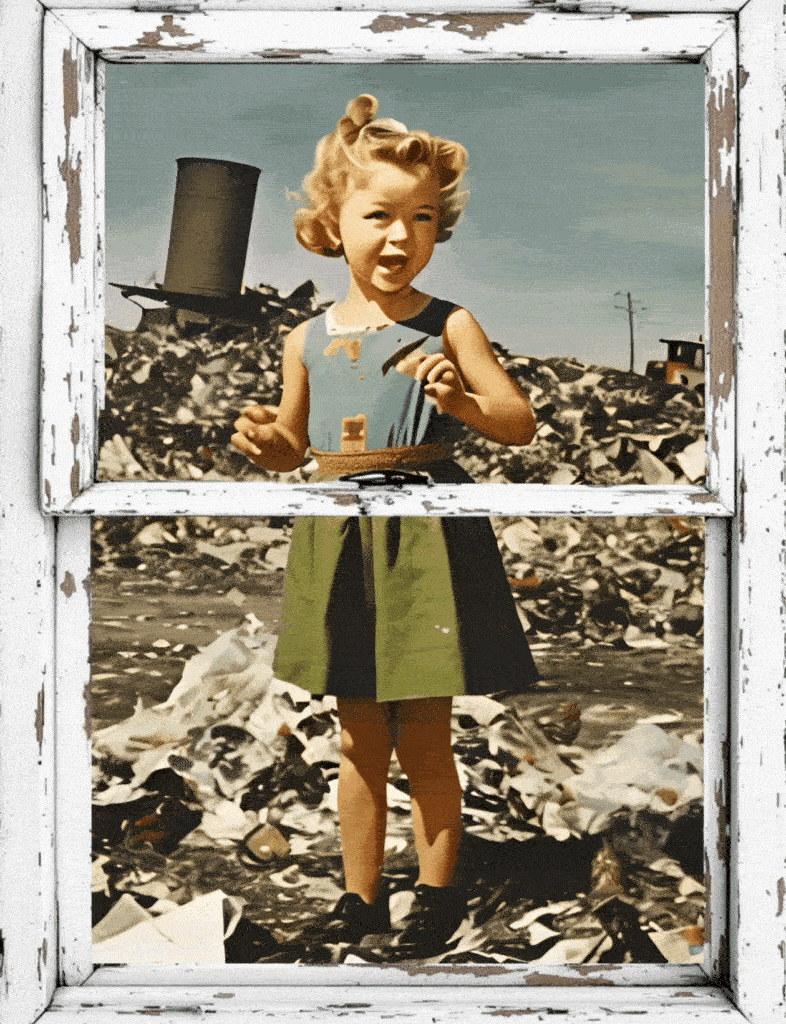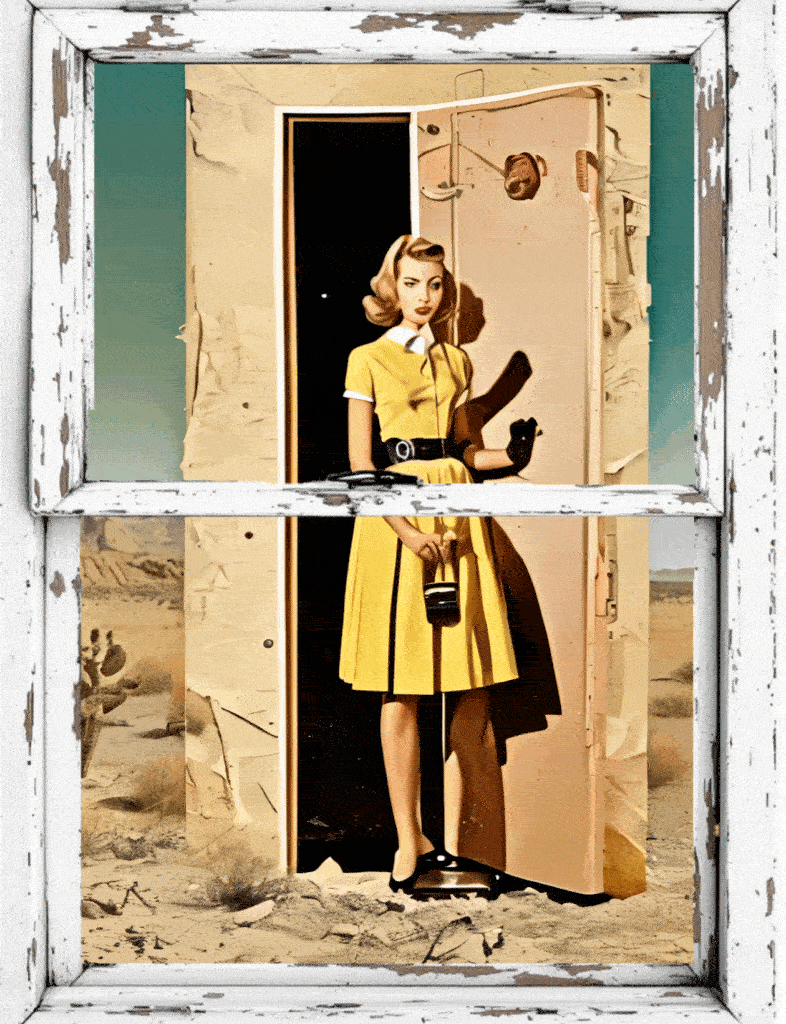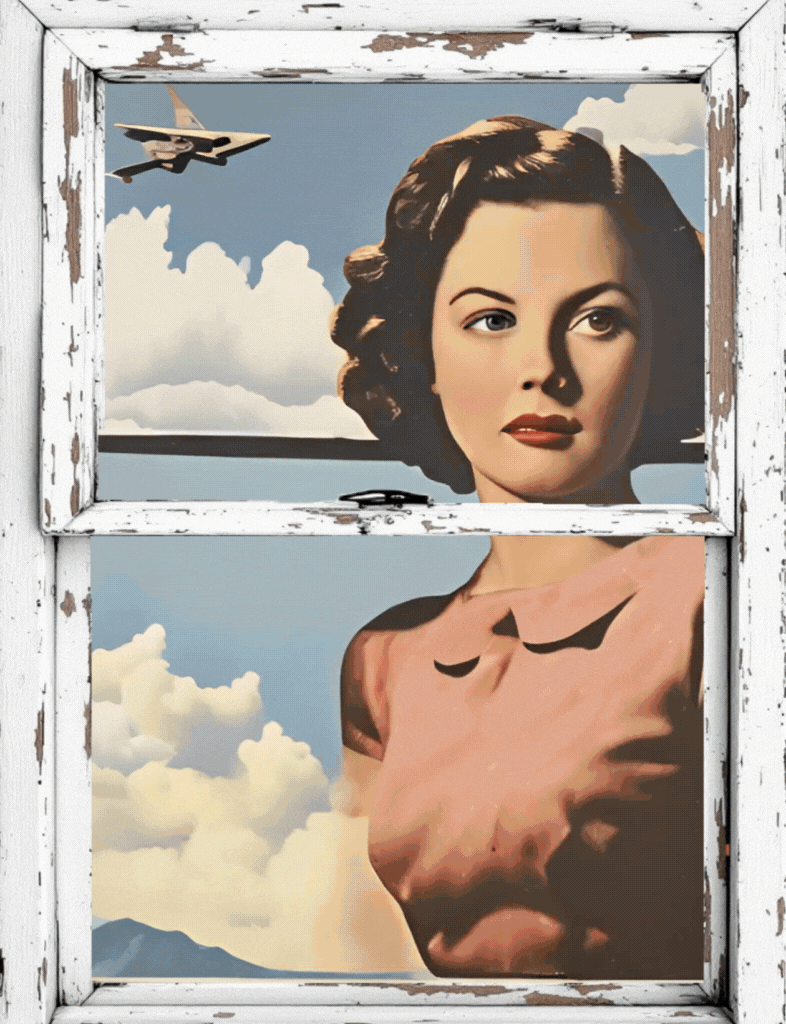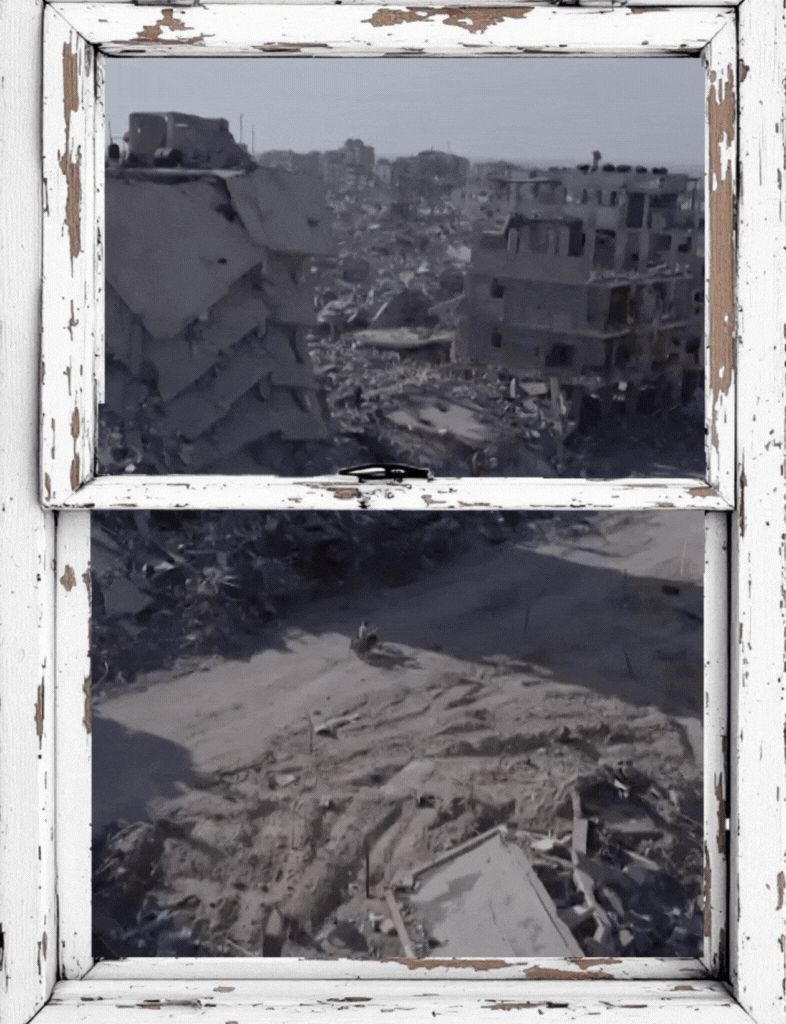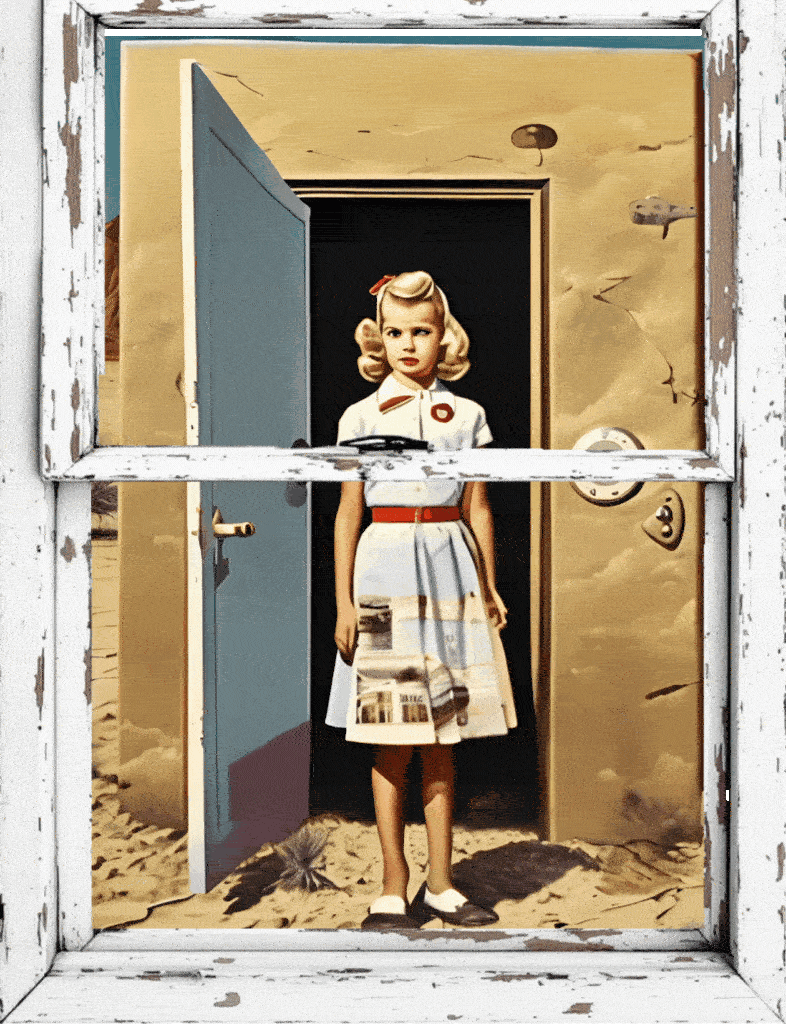
What do we see, when we look through a window? Immediately, the question appears naïve, even stupid. Of course, we see what is outside: the street, the people, the ocean, the world. But—ah!—here is the point: the window is not just a frame for reality, but a kind of ideological apparatus. It is never neutral. It stages what I call a dialectical tension between inside and outside, between safety and exposure, between what is given and what is hidden. In my kinetic artwork, the window frame remains static. It mocks our desire for stability, for a point of reference, while everything around it shifts: one moment, the aerial view of a bombed war zone, the next, the sublime indifference of the ocean, and then—suddenly—forms, abstract, ungraspable, almost traumatic in their refusal to signify. The window becomes a screen upon which the Real intrudes, but always mediated, always at a distance. The movement, the change of views, is not merely aesthetic; it is political. When we see the devastation from above, we are simultaneously implicated and insulated—like the drone operator who never smells the smoke. The ocean, on the other hand, is pure jouissance, the indifferent beauty of the world that cares nothing for our suffering. And the abstraction? That is the moment when meaning collapses, when we are forced to confront the void at the heart of our gaze. So, is the window a promise of escape, or a prison? Yes and no. It is both—and more. It is a machine for producing subjectivity, for staging the drama of perception, of ideology, of the gaze itself. In a sense, by standing before this work, you become the protagonist in your own Lacanian scene: What does this window want from me? What do I want from this window? Sometimes the most disturbing thing is not what we see, but that we are always already seen, structured by the frame, caught in the movement between horror and serenity, meaning and nonsense.



